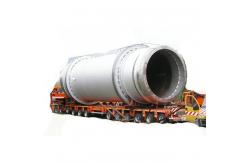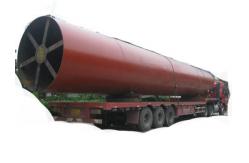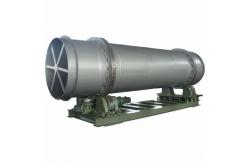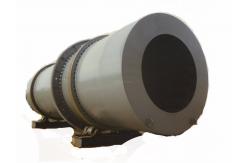Horizontal Dry Process 1000-2500TPD Cement Kiln Shell CITIC HIC Machine Parts
|
|
Cement rotary kiln parts rotary kiln shell 1. Products Description ZTIC developed large new dry process cement rotary kiln product
with cement research and design institutes in Tianjin, Nanjing and
Hefei by using domestic advanced technology, and the product can
match 3000~10000t/d large new dry process cement production line.
The company has a first-rate rotary kiln development, research and
design team, perfect test and inspection means and excellent large
rotary kiln manufacturing equipment and manufacturing technology,
and has formed a complete technology and production system
integrating rotary kiln design, manufacture, install and debugging
service. Cement Rotary Kiln
2. CITIC IC cement rotary kiln technical parameters: 3. Rotary Kiln ProcessesWith the arrival of rotary kilns, cement manufacturing processes became sharply defined according to the form in which the raw materials are fed to the kiln. Raw materials were either ground with addition of water, to form a slurry containing typically 30-45% water, or they were ground dry, to form a powder or "raw meal".
The original rotary cement kilns were called 'wet process' kilns. In their basic form they were relatively simple compared with modern developments. The raw meal was supplied at ambient temperature in the form of a slurry. A wet process kiln may be up to 200m long and 6m in diameter. It has to be long because a lot of water has to be evaporated and the process of heat transfer is not very efficient. The slurry may contain about 40% water. This takes a lot of energy to evaporate and various developments of the wet process were aimed at reducing the water content of the raw meal. An example of this is the 'filter press' (imagine a musical accordion 10-20 metres long and several metres across) - such adaptions were described as 'semi-wet' processes. The wet process has survived for over a century because many raw materials are suited to blending as a slurry. Also, for many years, it was technically difficult to get dry powders to blend adequately. Quite a few wet process kilns are still in operation, usually now with higher-tech bits bolted on. However, new cement kilns are of the 'dry process' type.
In a modern works, the blended raw material enters the kiln via the pre-heater tower. Here, hot gases from the kiln, and probably the cooled clinker at the far end of the kiln, are used to heat the raw meal. As a result, the raw meal is already hot before it enters the kiln. The dry process is much more thermally efficient than the wet process. Firstly, and most obviously, this is because the meal is a dry powder and there is little or no water that has to be evaporated. Secondly, and less obviously, the process of transferring heat is much more efficient in a dry process kiln. An integral part of the process is a heat exchanger called a 'suspension preheater'. This is a tower with a series of cyclones in which fast-moving hot gases keep the meal powder suspended in air. All the time, the meal gets hotter and the gas gets cooler until the meal is at almost the same temperature as the gas. The basic dry process system consists of the kiln and a suspension preheater. The raw materials, limestone and shale for example, are ground finely and blended to produce the raw meal. The raw meal is fed in at the top of the preheater tower and passes through the series of cyclones in the tower. Hot gas from the kiln and, often, hot air from the clinker cooler are blown through the cyclones. Heat is transferred efficiently from the hot gases to the raw meal. The heating process is efficient because the meal particles have a very high surface area in relation to their size and because of the large difference in temperature between the hot gas and the cooler meal. Typically, 30%-40% of the meal is decarbonated before entering the kiln. A development of this process is the 'precalciner' kiln. Most new cement plant is of this type. The principle is similar to that of the dry process preheater system but with the major addition of another burner, or precalciner. With the additional heat, about 85%-95% of the meal is decarbonated before it enters the kiln. In addition to these distinctions, a further category has emerged in the last 40 years: Precalciner Kilns, in which a proportion of the kiln fuel is burned in a static preheater before the feed enters the rotary kiln.
FAQ Q: Why we believe in luoyang zhongtai industries co., ltd: A: 1. More than 30 years experience. 2.We are the leading professional supplier of mining
machinery, construction machinery, machines casting and forged
parts. 3. All products achieved ISO9901:2000 quality
management certificate and CE, ROHS certificates. Q:Delivery time: A: parts lead time 1-2months, machines 2-3months. Q:Payment terms : A: Accept payment type: T/T, L/C, Western union,Cash. 30% deposit
when signed contract. Full payment paid before shipping. Q: Quality warranty? A: guarantee time: one year for main machinery. If something wrong
we will provide the technical advice and find solution immediately.
For those wearing parts we guarantee high quality parts for
long-term supply. Q: After sales service? A: we can supply technical guide for machines running test and
parts maintenance if end user needs. |
| Product Tags: 25mm Feeding Size Cement Kiln Shell 310 t rotary kiln shell 110 tph rotary kiln shell |
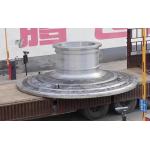
|
Wear-Resistant Alloy Ball Mill End Cover Hollow Shaft Integrated Casting |
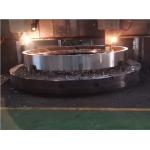
|
Wear-Resistant And Deformation-Resistant Rotary Kiln Gear Ring Supports Customization |
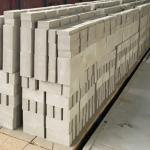
|
High Alumina Refractory Bricks With Excellent Anti-Spalling And Wear Resistance |
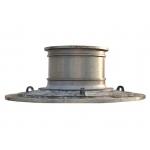
|
High Manganese Steel Ball Mill End Cover Impact Resistant Plate Design For Mining |
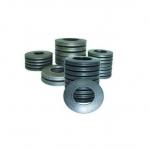
|
Large Mine Hoist Disc Brake Disc Spring Washer For Citicic Winch |
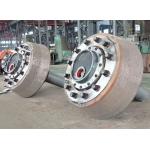
|
LGSM High Manganese Steel Grinding 1000t/H Mill Roller CITIC HIC Machine Parts |

